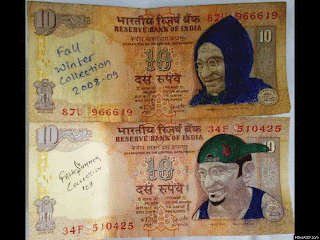We owe a lot to the Indians, who taught us how to count, without which no worthwhile scientific discovery could have been made - Albert Einstein
Namaste, (An Indian scholar defines - in literal terms Namaste refers to 'That which is of God in me bows to that which is of God in you') the moment you step into India, in all probability, the first word you will get to hear will be Namaste! The symbolism of the two palms touching each other is of great significance.
"Unity in Diversity" - India's languages, religions, customs, festivals, architecture, costumes, food, dance and music differ from place to place within the country form an inseparable part of its culture, but possess a commonality. India is the only country in the world to possess numerous religions and beliefs.
Several aspects of India's diversified culture — like Indian religions, yoga and Indian cuisine — have had a profound impact across the world. Indian cuisine is one amongst the most popular cuisines across the world, best known for its delicate use of herbs and spices and for its tandoori grilling techniques.
All members of the family sit and share their daily experiences during dinner time. Family plays an important role in the Indian culture.
The festivals of all religions are celebrated throughout the nation bringing everyone closer. Popular religious festivals include the Hindu festivals of Navratri, Diwali, Ganesh Chaturthi, Durga puja, Holi, Rakshabandhan and Dussehra. Worn by Indian women on their forehead, the bindi is considered to be a highly auspicious mark in Hindu religion.
Indian dance too has diverse folk and classical forms. Among the famous folk dances are Bhangra of the Punjab, Ghoomar of Rajasthan, Dandiya and Garba of Gujarat and in Classical dance are Bharatanatyam, Kathakali etc.
Cave paintings from Ajanta and Ellora and temple paintings testify to a love of naturalism. A fresh colored flour design (Rangoli) is still a typical sight outside the doorstep of the many Indian homes.
“Respect One Another” is in the roots of Indian culture. Indian culture has been adopting elements of foreign cultures over the years. Many foodstuffs from overseas are now well ingrained into the Indian cuisine. It is not that the Indian culture and traditions are getting killed. Rather good things from various cultures are getting accepted and adapted, adding a new flavour, a new aspect to our way of life. The valuable ones will be taken and consolidated. This is a process of development. It will make the Awesome Indian experience unique and precious.
India is an emerging superpower. A Young, dynamic and optimistic India is all fueled to be a success story of our time. The country is on track to have the largest economy by 2050. India is a rising giant whose influence is being felt not only in the Indian Ocean, but in the Americas, in Africa, West Asia, and in Central Asia.
This optimism is likely dictated by knowledge of India’s great population and potential, and by the confident, even brash, views of a rising middle class, determinedly nationalistic ‘netizens’. More Important is the fact that this netizens of the country have not forgotten the likes of Mahatma Gandhi, democracy and the freedom movement, but have very modern notions of India that range from taking oath to fight against terrorism to support the likes of Anna Hazare.
